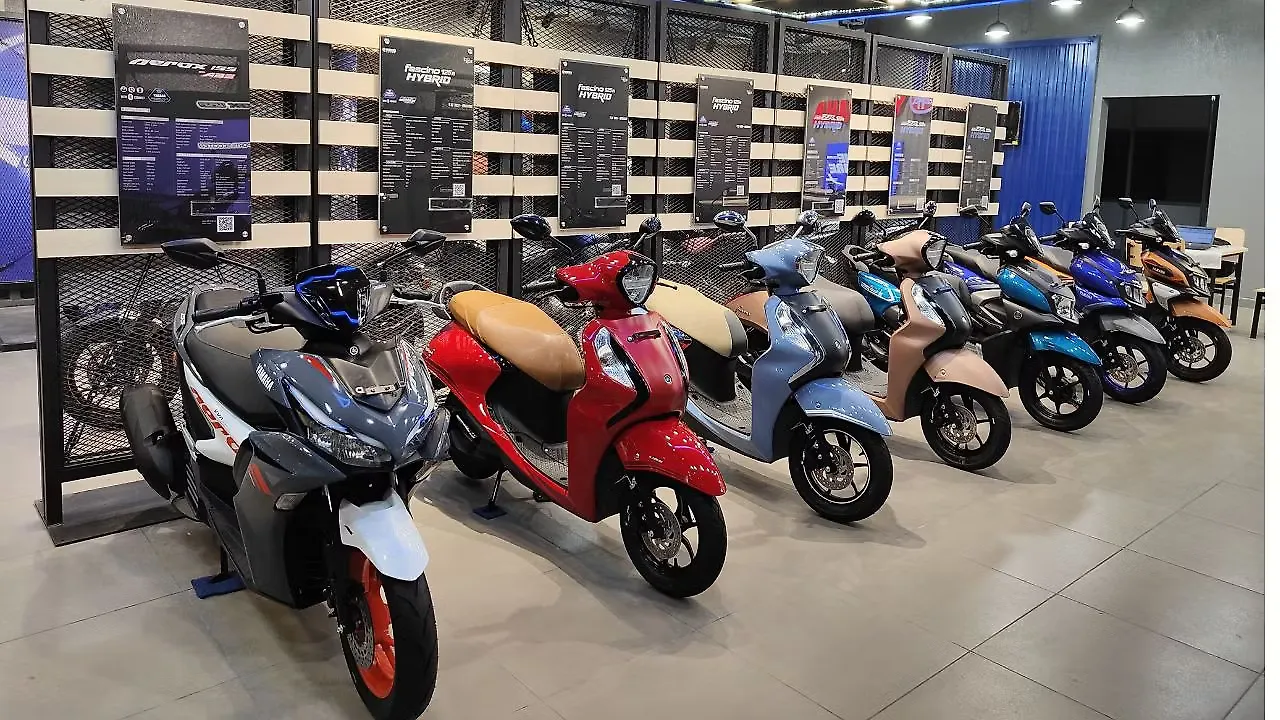
Yamaha Motor has indicated at a recent analyst briefing in Japan that the growth of electric scooters in India is mostly in the standard model segment and “not the premium model segment” that the company is focusing on.
“As we raise our market share in that segment, we are conducting electric model development so that we are ready to launch them in the market at an early stage if deemed necessary,” the management stated in the Q&A session following the declaration of results for the January-June period of this calendar.
These observations are in sync with what Eishin Chihana, Chairman, Yamaha Motor India group of companies, had told this writer during the course of an interview at the Chennai corporate office. “For Yamaha, our DNA is aspiration which is about exciting, sporty and stylish bikes for the youth,” he had said.
The underlying message was that the targeted customer for electric was different, and the product positioning, therefore, needed to be sharper. “It has to be unique and aspirational along with performance and this is the challenge. We can create our own unique value and positioning in electric,” reiterated Chihana.
While making it clear that he was “pushing a lot for electric” with headquarters in Japan, the Yamaha India Chairman added that this had to be in line with the Japanese automaker’s brand image and its target audience in India. “I am convinced that electric scooter penetration will increase in India but making the proper product is important. I am aware of ground realities and it makes sense to take one step at a time,” he had said.
Rapid Transition
Before moving to India, Chihana was in Japan working on the electric scooter development project for Europe and Taiwan. It was only after he came here to take charge did it strike him that the pace of electrification in two-wheelers was happening rapidly in India.
Yet, it was also evident that while buyers of electric scooters in Europe were typically green-oriented and concerned about the environment, those in India were more attracted to its lower running costs compared to petrol. Economy clearly took precedence over CO2 emissions which was only expected in a country where per capita income levels are not as high as Europe.
Beyond electric, Chihana drove home the point that the internal combustion engine (ICE) would still take up a large share of two-wheelers sold in India. “In the drive towards carbon neutrality, we have a strong position in ethanol expansion. We have the technology of E85 and E100 in Brazil and can bring those engines to India,” he had added.
By increasing the use of ethanol, “we can preserve ICE technology” while also protecting the interests of the supporting ecosystem comprising suppliers, dealers etc. If everything turned electric, there would be no oil and spare parts, whereas ethanol could contribute to the business of sugarcane farmers while reducing the dependence on crude oil imports.
Subsidy Slash
Getting back to the present, the Yamaha management in Japan said during the analyst session that “macroeconomics views India” as a market that would grow steadily from the current position and recover to its pre-pandemic demand scale of 20 million units. “There are more and more electric scooters being sold there and we are closely watching to see whether or not the government’s subsidies will carry on unchanged,” it added.

The Centre has, of course, slashed the subsidy on electric two-wheelers to 15% from 40% effective June this year and will do away with the residual balance by the end of this fiscal. As a result, sales will clearly be impacted, but industry stakeholders are confident that customers will see the long-term benefits of electric, where its operating costs will more than make up for the higher acquisition price tag.
Meanwhile, Yamaha is also confident that the improved semiconductor procurement “will allow us to increase our supply of products, particularly with premium segment scooters,” as stock levels for these have been tight in emerging markets like India. The other piece of good news is that raw material prices have not risen “as much as we originally anticipated” and ocean freight rates are “also lower than we first expected”.
The management made clear in the Q&A session that when it came to those emerging markets which were still without sufficient product in stock, it would have these replenished “to an appropriate level” within the year. From the next fiscal, wholesale shipments would be catering to actual demand so that the “impacts of a scale increase” would be smaller.
Building Resilience
“We currently view Indonesia, India, and Brazil as growing markets, but we also cannot accurately predict the changes that come to such emerging markets. Rather, we need to strengthen our resilience as a company, so we will reinforce our supply chain in order to be able to swiftly adapt to these changes,” Yamaha has stated.
From its point of view, even if countries are categorised as emerging markets, each one differs from the other. After demand “drastically fell” in these regions during the pandemic, the “slow but steady” climb back to previous levels has been an ongoing process.
“In our case, with our liquid-cooled scooter models—especially with our MAX Series—we were unable to meet market demands due to the semiconductor shortage. Things have gradually improved during the first half of the fiscal and since July, we have been able to secure enough semiconductors for production meeting market needs,” the management has said.
Also Read: